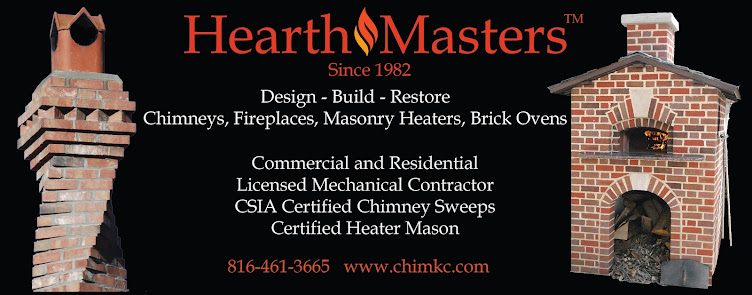By Marge Padgitt
Masonry heaters require regular maintenance in order to function properly, and the flue should be swept to avoid chimney fires. Maintenance includes sweeping of the chimney flue, brushing out the flue gas channels, an inspection of the chimney and heater, and doing any repairs necessary. If the masonry heater is operated properly there should be little, if any creosote in the flue, and you should find only small amounts of soot. If there is any amount of creosote in the flue proper operation and burning procedures should be reviewed. One to two very hot fires should be burned each day, or once every 12 hours for most heaters. The fire should not be “damped down” to maintain a longer burning time as is the normal procedure with a wood stove. The maximum number of fires per day should be three. For chimneys with exterior exposure, the flue will be colder than an interior chimney and will accumulate more soot.
Cleaning the flue gas channels involves using a small poly brush and vacuum. Go to the small channel doors, open them and clean and vacuum each one to remove fly ash. The chimney interior and exterior need to be inspected, and the heater itself should be inspected for any deterioration or loose firebrick in the firebox, any cracking in the exterior heater skin or finish work, and correct clearances to combustibles. Like any masonry structure, the masonry heater and chimney will need to be maintained and repaired as needed. Get a copy of the Homeowners Safety Manual and Burning Guide for Masonry Heaters for free at www.mha-net.org.
Be sure not to use a grate inside the firebox. Fires should be built right on the firebrick floor. The door should be closed during operation, and flammable liquids should not be used to start fires. Homeowners should not burn anything other than dry cordwood in the heater. Building a top-down burn fire will provide a clean burn startup with less CO and smoke. The top-down burn is the opposite of what you learned as a Scout. Place a couple of large logs on the bottom with an airspace between them, then add smaller logs on top in the opposite direction, then kindling. Try Fatwood or dry pine as a fire-starter. The fire will burn down slowly, like a candle. This method warms the flue slowly and causes draft to establish before the fire really gets going.
Your professional chimney sweep is best qualified to sweep and maintain a masonry heater, and can likely do any minor masonry repairs needed as well. Find a professional chimney sweep at the Chimney Safety Institute of America site at www.csia.org.
For more information visit www.mha-net.org or call Executive Director Richard Smith at 530-883-0191.
_______________________________
Marge Padgitt is an industry veteran, author, and educator.
_______________________________
Marge Padgitt is an industry veteran, author, and educator.


